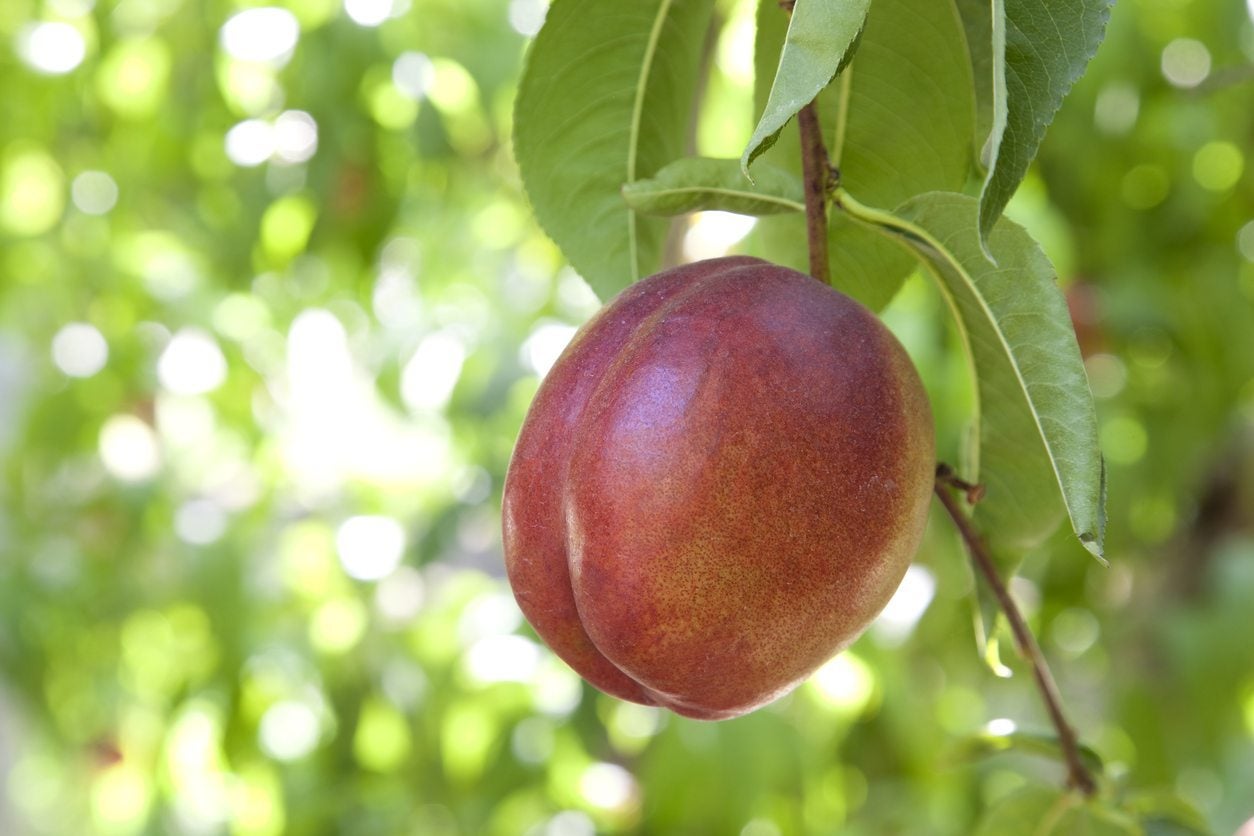Nectarine Tree Not Fruiting – How To Get Fruit On Nectarine Trees

Say you have a gorgeous five year old nectarine tree. It has been growing well and flowering but, unfortunately, you get no fruit. Since it does not have any obvious diseases or insect pests, why is the nectarine tree not fruiting? There are quite a few reasons for a fruitless nectarine tree. Read on to find out how to get fruit on nectarine trees.
Why Won’t My Nectarine Tree Fruit?
The most obvious starting point is looking at the age of the tree. Most stone fruit trees don’t bear fruit until year two or three and, in fact, it’s a good idea to remove the fruit if they do to allow the tree to put all its energy into forming solid bearing branches for future crops. Since your tree is five years of age, this probably isn’t why the nectarine tree isn’t fruiting. Another reason for a lack of fruit may be the number of chill hours the tree needs. Most nectarine varieties need 600 to 900 chill hours. Depending upon where you live, the tree may not receive enough chilling hours to set fruit. Yet another reason for a fruitless nectarine tree may be excessive tree vigor. While this doesn’t sound like a bad thing, it certainly can impede fruit production. This typically occurs when the tree is getting excessive amounts of nitrogen. It may not have anything to do with how you are fertilizing the tree, but if the nectarine is near grass and you fertilize the grass, the roots may be taking up copious quantities of nitrogen resulting in a lush plant with no fruit. To resolve the situation, don’t fertilize the lawn within 5 feet (1.5 m.) of the spread of the tree’s canopy. You may need to do a soil test on occasion to pinpoint exactly when and how much fertilizer the tree needs. Hand in hand with fertilization, is over pruning. Over pruning will signal the tree to grow and so it will. If you’ve had a less than judicious hand when pruning the tree, it may have responded by going on a growth spurt, sending all its energy into producing limbs and foliage, rather than fruit. Frost damage may be the culprit for a lack of fruiting. Once the flower buds begin to swell, they are susceptible to frost. You might not even notice the damage. The flowers might open as usual, but they will be too damaged to set fruit. In this case, be sure to always site trees on the most frost-free area of your landscape, those near the house or slightly elevated. Be sure to select cultivars that are suited to your region and hardiness zone. Finally, apparently sometimes you get a dud. Sometimes trees are sterile. Then the question is whether you want to keep the tree for its beauty or replace it with one that will fruit.
How to Get Fruit on Nectarine Trees
First of all, select the correct cultivar for your USDA zone and microclimate. Contact your local extension office. They can supply you with pertinent information for your area. Situate trees in the most frost-free area of the landscape, never at a low point. Don’t use insecticides when the tree is in bloom lest you kill off all the beneficial honeybees. Keep an eye on fertilization, especially lawn fertilization near nectarines. Keep it at least 5 feet (1.5 m.) away from spread of the tree’s canopy. Cool it on the pruning. Only remove dead and diseased limbs and those that cross over each other. How old is your tree? Remember, nectarine trees don’t fruit, or very minimally, until they are three or four years old. You may have to be a little patient until your tree has matured when it will reward you with a bumper crop of juicy nectarines.
Sign up for the Gardening Know How newsletter today and receive a free copy of our e-book "How to Grow Delicious Tomatoes".

Amy Grant has been gardening for 30 years and writing for 15. A professional chef and caterer, Amy's area of expertise is culinary gardening.
